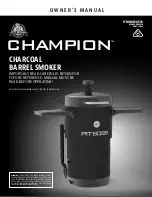
Refrigerated Storage Design Guide
VESDA
®
5.
What are the airflow characteristics of the protected areas, entrances and loading bays?
6.
What are the pipe insulation requirements?
7.
What effects might the defrost cycles and associated condensation have on fire protection?
8.
What is the possibility of condensation occurring both within and on the outside of the pipe
network?
9.
What is the configuration of racking within the areas to be protected?
10.
How well sealed are the wall and ceiling insulation panels?
11.
Is pre-action suppression to be included in the fire protection system and, if so, how will it be
integrated with the VESDA system?
2.4
Why Use VESDA Smoke Detection?
VESDA Aspirating Smoke Detection (ASD) systems have been used to protect refrigerated storage
facilities for many years. Most fire protection technologies which are designed to operate in
freezing conditions are not capable of early warning detection and are prone to being damaged by
equipment such as forklift trucks. The very early warning capability of VESDA detectors means that
they are able to detect the incipient (pre-combustion) stage of a fire which drastically reduces
business disruption, asset damage and the potential risks to the safety of personnel. The design
flexibility of VESDA systems also allows them to be used for the automatic activation of pre-action
suppression, both gaseous and sprinkler.
The combustible nature of the types of materials normally stored in refrigerated environments,
combined with the very dry high airflow in such environments, creates a significant fire risk. Fires
will spread rapidly between cardboard or plastics packaging, grease impregnated materials, food
stuffs and wooden pallets. Hence, the earlier a fire can be detected the better.
The perishable nature of the goods, commonly stored in freezers or coolers, makes it essential that
any rise in temperature be avoided. Heat from a fire or a rise in temperature due to refrigeration
system down time, following a fire, would both result in stock spoilage and hence loss of revenue.
Even an incipient fire, in this type of environment, can lead to significant losses if not detected and
managed early. Stock exposed to low levels of smoke over an extended period of time will become
contaminated.
Other advantages of the VESDA system are that, with a properly designed system, performance
will be reliable and little influenced by condensation or the high airflows caused by blast chillers.
The deficiencies of other detector technologies in low temperatures are recognized by many
international codes and standards which regulate against the use of them in environments where
the ambient temperature is less than 0°C (32°F)
[10]
. Linear heat cables are permitted in freezers but
are prone to damage by forklift trucks and other common work procedures. Since VESDA detectors
are installed outside the protected area, only the sample pipe network is exposed to sub zero
temperatures. Being on the ceiling and inside voids makes it unlikely that the VESDA sample pipes
will be damaged.
Note:
Unlike the FM approved VESDA system, linear heat cables are specifically for the activation
of pre-action suppression and cannot simultaneously provide the very early warning smoke
detection which may prevent the need for suppression.
3.
Designing For Effective Fire Protection
In this section, design methodologies will be described with consideration for the different
requirements depending on the function of the particular area being protected.
Important Note:
The latest version of ASPIRE2
TM
, the VESDA sample pipe modelling program,
should be used for all pipe network designs.
4











































